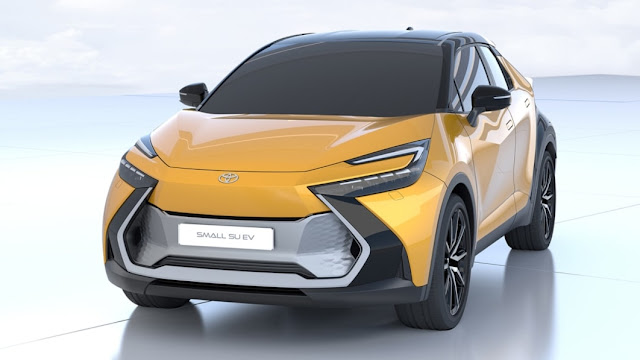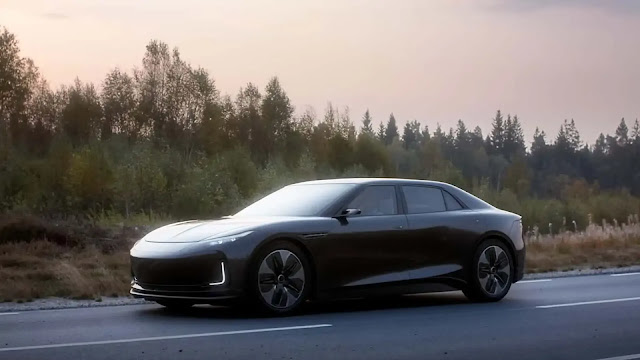The Incredible Story of the Suzuki Jimny: A Compact 4x4 Icon
The Suzuki Jimny, a true trailblazer in the automotive industry, emerged as an extraordinary creation—a compact consumer four-wheel-drive vehicle equipped with advanced features like a dual-range transfer case, ladder frame chassis, and live axles on both ends.
Its small size and lightweight nature gave it the remarkable ability to conquer terrains that larger conventional four-wheel drives could only dream of handling. Over the years, the Jimny has evolved into a symbol of success and resilience, capturing the hearts of off-road enthusiasts worldwide.
The Origins of a Legend:
Jimny's captivating story begins with the Hope Motor Company, a lesser-known automobile manufacturer in Japan, renowned for its three-wheel small utility vehicles. In 1967, Hope developed the HopeStar ON360, a four-wheel-drive "midget Jeep" powered by a 360cc Mitsubishi ME24 engine. However, it was Suzuki's purchase of this project that brought the Jimny to life on a larger scale.
Suzuki's Vision:
Suzuki recognized the ON360's potential as an affordable and robust four-wheel-drive vehicle. Prior to this, they had acquired a Steyr Puch Haflinger from Austria to evaluate its off-road capabilities. Although impressed, Suzuki understood that Haflinger's technical complexity and specialized maintenance needs would pose challenges in rural Asian areas. With the acquisition of the HopeStar ON360, Suzuki had a viable platform to develop their own compact four-wheel-drive vehicle—the future Jimny.
The 1st Generation Suzuki Jimny:
The initial generation of the Suzuki Jimny, known as LJ10, LJ20, SJ10, and SJ20, proved to be a groundbreaking success. Suzuki replaced the Mitsubishi engine with their own 359cc twin-cylinder, two-stroke engine, increasing the power output. The Jimny retained the ladder chassis from its predecessor but featured Suzuki-designed bodywork that set it apart.
To meet Japan's "Kei car" regulations, Suzuki adhered to specific dimensions, ensuring owners received the associated tax benefits, they had to place the spare tire inside the car. The LJ10 incorporated a fully functioning part-time four-wheel-drive system, allowing drivers to switch between two-wheel-drive and four-wheel-drive depending on the road conditions. Equipped with leaf springs and live axles, the LJ10 boasted the same durable suspension system found in larger four-wheel-drive vehicles, enhancing its off-road prowess.
Expanding Horizons:
With the LJ10's success, Suzuki further refined the Jimny over the next eleven years. The LJ20, introduced in 1972, marked the first revision and featured a 539cc water-cooled two-stroke inline-three-cylinder engine. Notably, the LJ20 witnessed exterior changes, including a shift from horizontal to vertical grille slats. This generation also saw the introduction of the LJ20 Hard Top Van, showcasing smaller 15-inch wheels.
In response to evolving emissions regulations, Suzuki upgraded the LJ20's engine to the water-cooled 539cc LJ50 two-stroke inline-three-cylinder engine. Additionally, Suzuki diversified the domestic and export Jimny models, introducing the SJ10 for the Japanese market and the SJ20/LJ80 for export markets. The SJ20 featured a more potent F8A 797cc four-stroke engine, elevating the Jimny's on and off-road performance.
Unmatched Capability:
While the Suzuki Jimny's compact size may lead some to underestimate its capabilities, it has proven its mettle time and again. An excellent example is Gonzalo Bravo and Eduardo Canales' expedition to Ojos del Salado in the Andes, where they conquered the challenging terrain in their modified Suzuki Jimny SJ40. Scaling heights of 6,688m.
The 2nd Generation Suzuki Jimny – SJ410, SJ413
The Suzuki Jimny continued to evolve and gain popularity, paving the way for its third generation, which introduced significant improvements and advancements. In 1984, Suzuki introduced the SJ410, also known as the Jimny 1000, as the successor to the SJ40 model.
The SJ410 featured a more powerful engine, the F10A 1.0-liter, SOHC 8-valve four-cylinder engine, capable of producing 45 horsepower and delivering an increased performance both on and off the road. The improved engine, coupled with its lightweight construction, allowed the Jimny to tackle challenging terrains with ease.
In 1985 Suzuki Jimny received various updates and improvements, making it more capable and comfortable.
One notable variant of this generation Jimny was the SJ413. This model featured a larger engine, the G13A 1.3-liter four-cylinder engine, generating 63 horsepower and offering improved performance compared to its predecessor. The SJ413 became particularly popular in various global markets, including Europe where it was called the Samurai. It was also very successful in Australia.
Jimny's reputation as a capable off-roader continued to grow, and it started to gain a dedicated following among outdoor enthusiasts and adventure seekers. Its compact size, maneuverability, and rugged build made it the perfect companion for exploring remote and challenging terrains.
The 3rd Generation Suzuki Jimny – A Modern Legend
As the years went by, the Suzuki Jimny kept pushing the boundaries of what a compact four-wheel-drive vehicle could achieve. In 1998, the fourth-generation Jimny was unveiled, introducing significant updates and modernization.
Suzuki Jimny- The fourth-generation
The fourth-generation Suzuki Jimny received a modernized design and enhanced capabilities, making it a favorite among outdoor enthusiasts.
The fourth-generation Jimny retained its distinctive boxy shape, which had become synonymous with the model. However, it received a fresh and more modern design, incorporating sharper lines and bolder features. The interior was also given a significant overhaul, offering improved comfort, advanced technology, and enhanced safety features.
Under the hood, the fourth-generation Jimny was powered by a range of efficient and capable engines, depending on the market. The K15B 1.5-liter four-cylinder engine, providing 101 horsepower.
The latest Jimny boasted advanced four-wheel-drive capabilities, including a dual-range transfer case and all-terrain performance features. Its compact size, coupled with its impressive approach and departure angles, allowed the Jimny to navigate tight trails and conquer challenging obstacles with ease.
The Suzuki Jimny has remained a popular choice among off-road enthusiasts, urban adventurers, and everyday drivers alike. Its versatility, reliability, and iconic design have solidified its status as one of the automotive industry's most notable success stories.
The Future of the Suzuki Jimny
With its enduring popularity and continuous advancements, the future of the Suzuki Jimny looks promising. In 2023, Suzuki plans to release a long wheelbase five-door model, further expanding the Jimny lineup and providing customers with even more options.
The upcoming model is expected to retain the Jimny's rugged capabilities while offering increased interior space and versatility. Whether it's tackling rough terrains or navigating city streets, the Jimny's reputation as a compact 4x4 icon is set to continue for years to come.
From its humble beginnings as the HopeStar ON360 to its current status as a global automotive icon, the Suzuki Jimny has come a long way. With each generation, it has pushed boundaries, captivated the hearts of adventure enthusiasts, and showcased its remarkable off-road capabilities.
As the automotive industry continues to evolve, the Suzuki Jimny remains a symbol of resilience, innovation, and unmatched capability. With its compact size, rugged design, and unwavering spirit, the Jimny is a testament to Suzuki's commitment to providing exceptional vehicles that can conquer any terrain.
Whether cruising through urban landscapes or venturing into the great outdoors, the Suzuki Jimny continues to inspire the sense of adventure and exploration that lies within us all. It is a remarkable testament to the incredible journey of a compact 4x4 icon that has left an indelible mark on the automotive world.











Comments